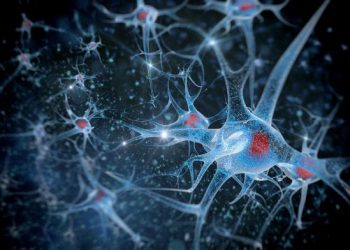In a perfect world, breast cancer would be caught early and not cause any symptoms. But lumpiness and other changes in the breasts are sometimes early signs of cancer. They can also be due to other conditions such as:
Most breast cancers are found through routine screening mammograms, before any warning signs appear. That’s why it’s important to regularly perform self-exams and talk with your doctor about any changes you notice.
Lumps
Many women find their first sign of breast cancer is a painless lump or area of thickened tissue. These early signs of breast cancer are more often caused by other health conditions, but it’s still important to see your doctor if you notice any new or suspicious-looking growths.
A lump feels different than other parts of the breast and can feel rubbery or hard. Lumps may be movable or fixed, and they can grow or shrink over time. Some women are more sensitive to the touch of a lump than others, but if it feels solid and isn’t causing pain or other symptoms, it’s likely not a problem.
If you’re breastfeeding, a lump in the breast or underarm (armpit) may be a symptom of engorgement or a clogged milk duct. If you’re not, any changes in the shape or size of your breasts should be reported to your doctor.
Inflammation and redness in the breast are also possible signs of inflammatory breast cancer. This rare and aggressive form of cancer is difficult to treat. It occurs when cancer cells block lymph vessels in the skin of the breast, preventing normal fluid flow. Symptoms of inflammatory breast cancer usually develop quickly, over the course of weeks or months. The skin of the affected breast may appear bruised or reddish purple and may have ridges or pitted areas, similar to the appearance of an orange (called peau d’orange).
Some other types of breast cancer can cause symptoms that resemble those of inflammatory breast cancer. Fibroadenoma, for example, often causes a lump in the breast and can also be mistaken for cancer. Other types of breast cancer can cause a painful lump and redness and warmth in the breast, but these symptoms are less common than those of inflammatory breast cancer.
Most cancers found in the breast are found by doctors during routine screening mammograms, or when they are discovered by patients who notice a change to their body, such as a lump or area of thickened tissue. The only way to improve the chances of finding these early-stage cancers is for people to be aware of what their bodies should look and feel like — particularly the nipple and breast areas — and to report any unusual or abnormal symptoms to their doctor right away.
Swelling
Women should become familiar with how their breasts feel and look, and should seek medical attention if they notice any abnormal changes. This will help doctors spot signs of cancer in the early stages, when it’s easier to treat. Breast cancer symptoms vary from person to person, but they often include lumps, pain, or changes in skin texture or size. Many benign (non-cancerous) conditions also cause these symptoms, and some of them go away on their own. These include cysts, a fluid-filled sac in the tissue; inflammation in the milk ducts or lobules called mastodynia; sclerosing adenosis, a condition in which lobules enlarge; and intraductal papillomas, benign wart-like tumors in the lobules.
Other breast cancer symptoms may include a lump that doesn’t hurt, but feels different from other breast tissue; a change in the appearance or color of the skin on the breast; an unusual nipple discharge that is clear, bloody, or another color; and an indented or flat area on the breast that can be felt, or is visible under clothing. Breast cancer can also spread to the lymph nodes in the armpit or under the collarbone, and this may cause a lumpy feeling in these areas.
A lump is the most common symptom of breast cancer, but it’s not always the first sign. A lump that’s not painful is more likely to be caused by a non-cancerous condition. Some cancers are hard and have jagged edges; others are soft or have rounded edges.
If a woman’s lump is found, her doctor will do a physical exam and order a mammogram. A mammogram is a picture of the inside of the breasts that can help find tumors that are too small to feel with a hand exam. The majority of breast cancers are detected through mammograms, and early detection means more treatment options and a better chance of survival.
Women who smoke or have a family history of breast cancer are at increased risk of the disease. Other risk factors include being over 40, not having a regular screening mammogram, and having a history of ovarian cancer or hysterectomy.
Changes in the Nipple
Although the first sign of breast cancer is usually a lump, it’s important to be aware that there are other early signs. Any change in your nipple or the appearance of your skin should be reported to your doctor, especially if it’s new and isn’t due to something else like pregnancy or menstrual symptoms. Also keep an eye out for nipple pain or a feeling of heaviness, particularly if it’s one-sided and persistent.
Your nipple is made up of fat and connective tissue and has thousands of tiny glands, called lobules, that make milk. Tiny tubes, or ducts, carry the milk to the nipple. Breast cancer can start in the cells that line these ducts, leading to a form of cancer called ductal carcinoma in situ. It can also start in the lobules themselves, which leads to a form of cancer called lobular carcinoma.
Both forms of breast cancer can grow into the surrounding tissue and affect nipple function. If you have a ductal carcinoma, it might spread to the lymph nodes and cause nipple pain and heaviness. If you have a lobular carcinoma, it might spread to the tissues that surround your nipple and cause a lumpiness or hardness.
Inflammation of the nipple is also a sign of breast cancer, as is a rash that’s red and scaly, which looks a little like eczema. A new lump in the nipple should also be checked, as should any swelling of the armpit and collarbone area. The armpit and collarbone lymph nodes are small, rounded collections of immune system tissue that help filter out harmful cells. If a cancer cell leaves the breast, it will typically go to those lymph nodes first.
Less than half of the women who took a recent breast cancer survey correctly identified some early symptoms, including a retracted or inverted nipple, nipple puckering that occurs when you raise your arms, loss of feeling in part of your breast, skin thickening and nipple discharge. It’s especially important for men to know these early signs, as they are not always obvious and may be more easily mistaken for nipple engorgement or irritation.
Pain
While most breast cancers are found by screening mammograms, they can also show up as painless lumps or other changes in the breasts. If you notice any of the early signs of breast cancer, it’s important to see a doctor right away. Some cancers have different symptoms, depending on the type of breast cancer and whether it has spread to nearby tissues.
The most common sign of breast cancer is a new lump in the breast. Lumps may feel hard and have irregular edges or be tender and soft. Some breast cancers can also cause a change in the texture of the skin on the breast, such as a rash or dimpling. Breast pain is a rare symptom of breast cancer, although a tumor can cause it if it grows fast and pushes into surrounding tissue.
If a new lump is found in the breast, your doctor may order an ultrasound to check it. This is a painless scan that uses sound waves to make a picture of the breast tissue. If a biopsy is needed, your doctor will remove some of the mass and send it for examination under a microscope.
Most of the time, a new lump is caused by benign conditions, such as fibrocystic change or a cyst. But, if the lump is painful, it could be a sign of invasive ductal carcinoma, which begins in the milk ducts and invades the fatty tissue of the breast. Invasive ductal carcinoma accounts for about 80% of invasive breast cancer cases.
Breast cancers can also spread to other parts of the body, including the bones and lymph nodes. This is called metastasis. When this happens, the cancer cells can grow into and destroy bone tissue and other organs such as the liver or lungs. If the cancer reaches these sites, it can cause new symptoms such as back pain.
If you have back pain, your doctor will probably test your blood and ask questions about your medical history. The test results can help determine if the pain is caused by a metastatic cancer or other condition. If the cancer has reached the bones of the spine, you will likely need surgery to relieve the pressure on your spinal cord and prevent it from stopping your nerves from working.









